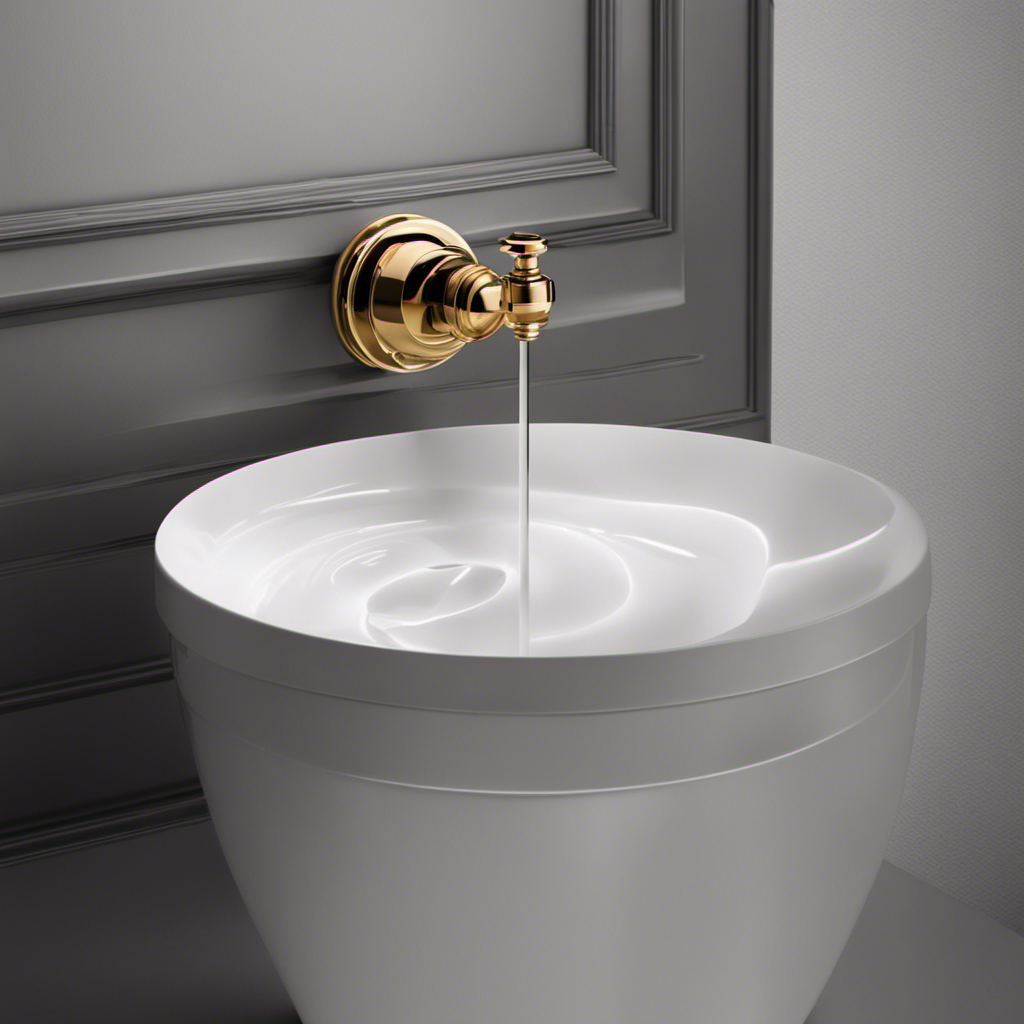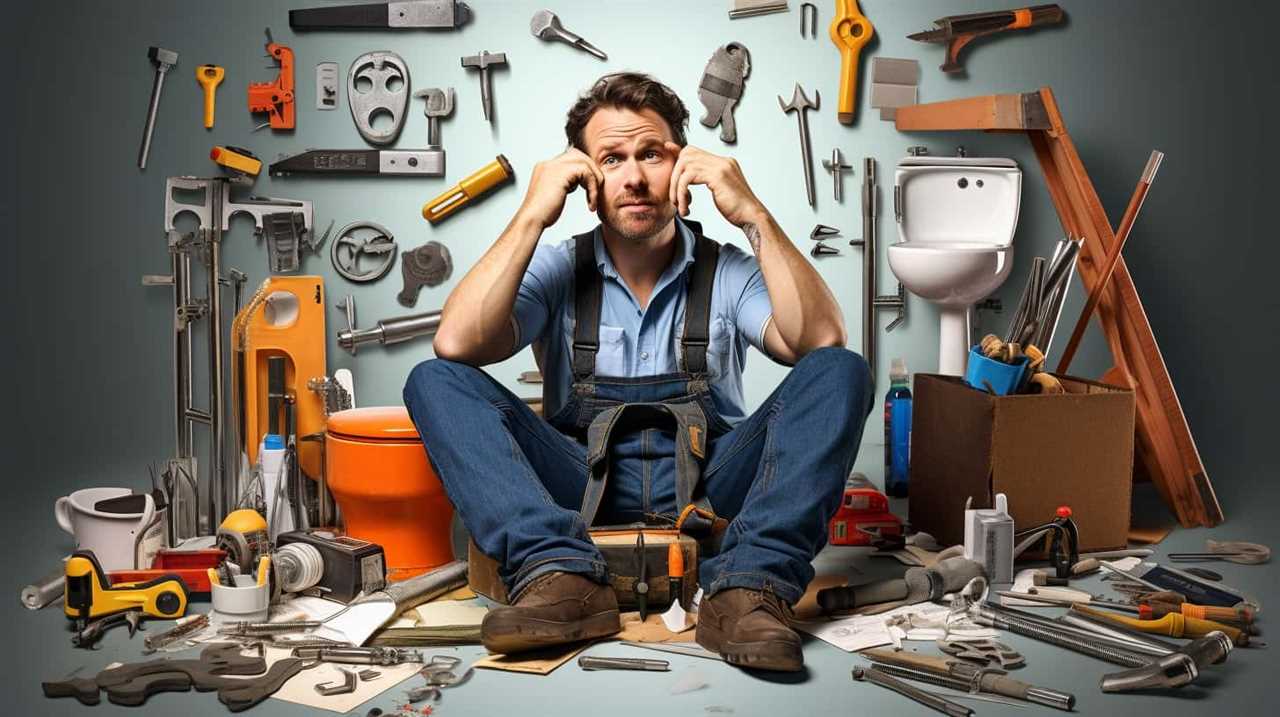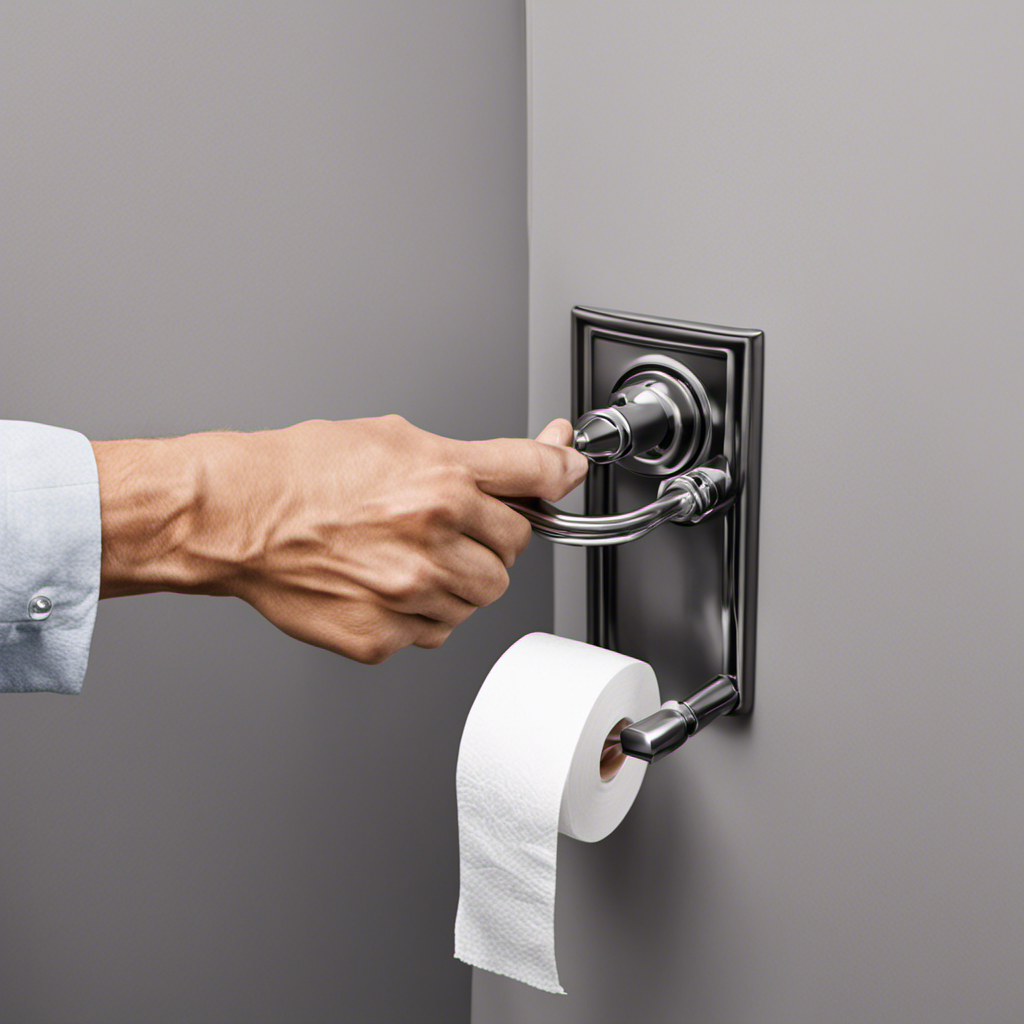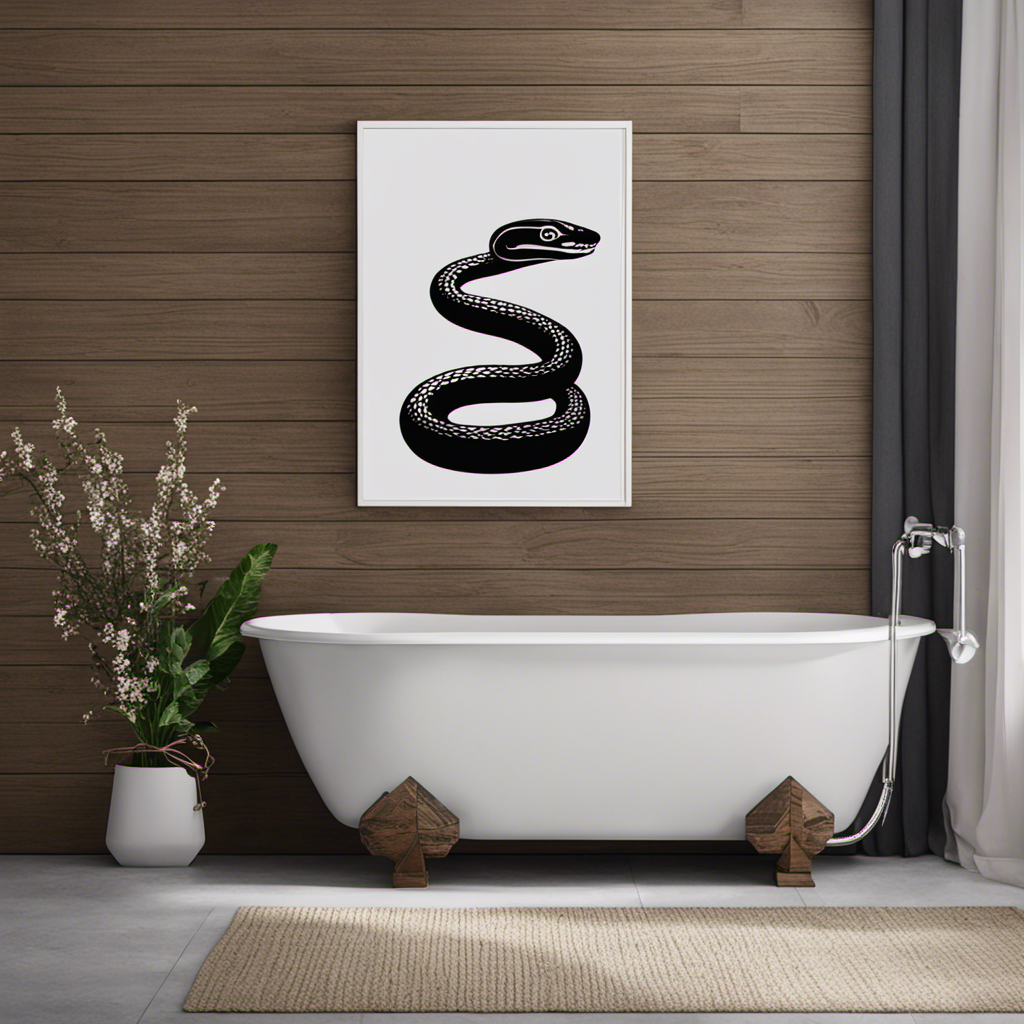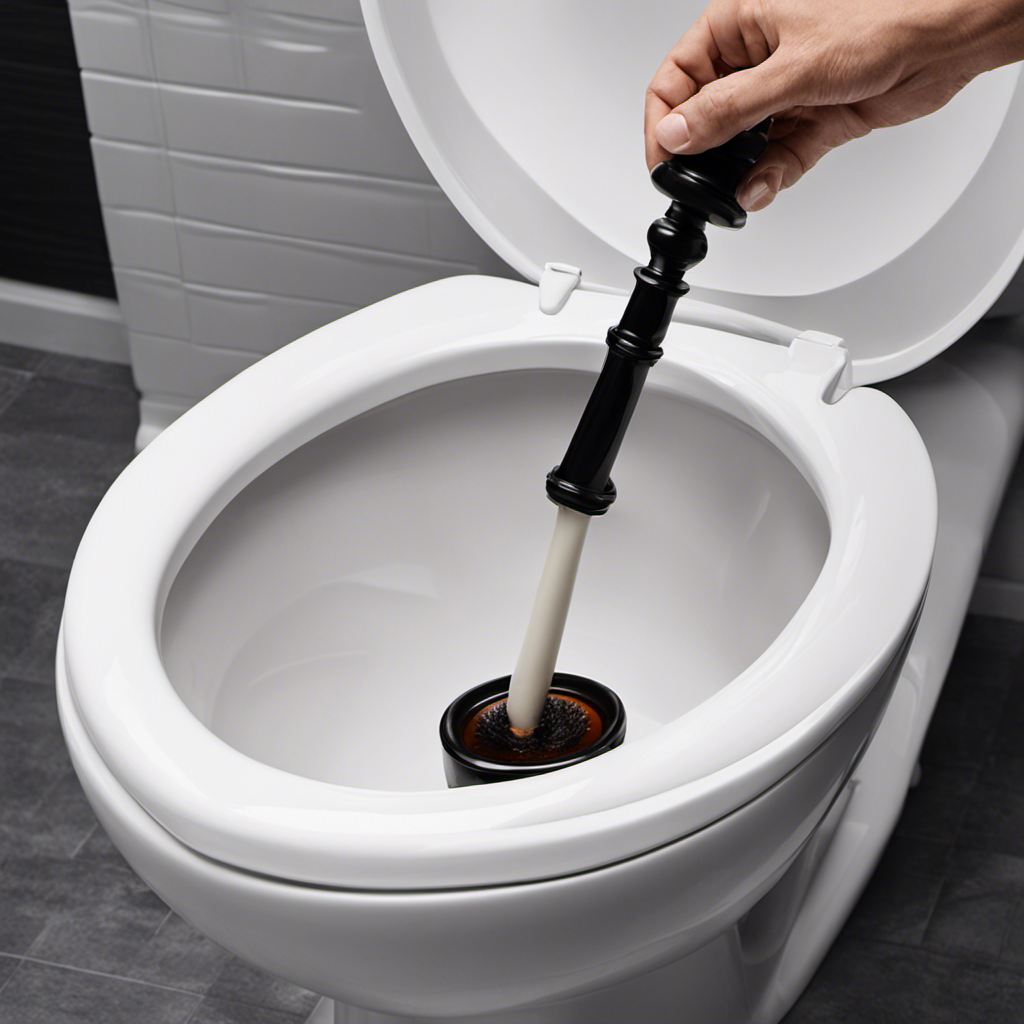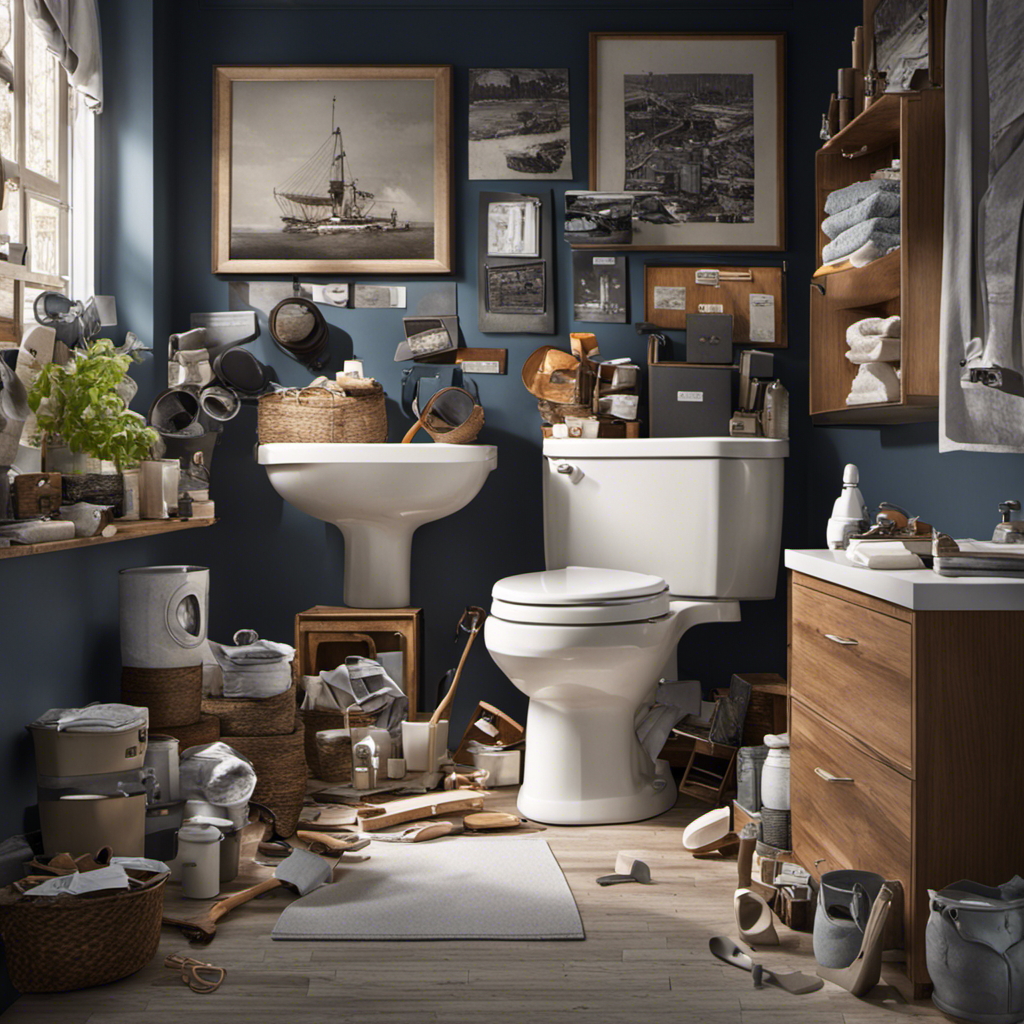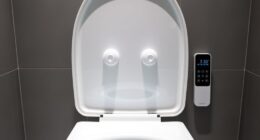Does the thought of your toilet overflowing send shivers down your spine? You’re not alone. It’s a common and frustrating problem that can wreak havoc in your home.
But fear not, because in this article, we’ll show you how to put an end to this messy situation. From unclogging techniques to preventive measures, we’ve got you covered.
So, grab your plunger and get ready to tackle this issue head-on. Say goodbye to overflowing toilets once and for all.
Key Takeaways
- Excessive toilet paper usage and flushing foreign objects can lead to toilet overflow.
- Rapidly rising water and gurgling sounds indicate an impending overflow.
- Turning off the water supply and using a plunger or toilet auger can help stop the overflow and remove the clog.
- Taking immediate actions, such as locating the shut-off valve and unclogging the toilet, can minimize damage and prevent further complications.
Causes of Toilet Overflow
One of the main causes of your toilet overflowing is a clog in the pipes. To prevent toilet overflow, it is crucial to understand the common toilet clog culprits.
One of the most frequent culprits is excessive toilet paper usage. While toilet paper is designed to dissolve in water, using too much can lead to a blockage in the pipes.
Another common cause is flushing foreign objects down the toilet, such as feminine hygiene products, wipes, or cotton balls. These items do not break down easily and can cause a severe clog.
Additionally, tree roots invading the sewer lines outside your home can also lead to toilet overflow. Regular inspection and maintenance of the plumbing system can help identify and prevent these issues, ensuring your toilet functions properly.
Signs of an Overflowing Toilet
If you notice water rising rapidly and hear gurgling sounds coming from the bowl, you’ve got a problem. These are clear signs that your toilet is on the verge of overflowing. Acting quickly to prevent a messy situation is essential.
Here’s what you need to do:
-
First, turn off the water supply to the toilet. There’s usually a valve located near the base of the toilet or on the wall behind it. Shutting off the water will stop the flow and prevent any further overflow.
-
Next, grab a plunger and try to dislodge the clog. Apply firm pressure and create a seal around the drain hole. Push and pull vigorously to break up the obstruction.
-
If the plunger doesn’t work, you may need to use a toilet auger. Insert the auger into the drain hole and rotate the handle to break up the clog.
-
Remember, common causes of toilet clogs include excessive toilet paper, foreign objects, and flushing non-flushable items. Taking precautions and practicing proper toilet overflow prevention can help you avoid these situations in the future.
Immediate Actions to Take When Toilet Overflows
When water starts rising rapidly and you hear gurgling sounds, it’s crucial to act quickly and prevent a messy situation.
If you find yourself facing an overflowing toilet, there are immediate actions you can take to minimize damage and avoid further complications.
First, locate the shut-off valve near the base of the toilet and turn it clockwise to stop the water flow. If you can’t find the valve, remove the tank lid and lift the float to stop the water supply.
Next, grab a plunger and position it over the drain hole, applying firm and consistent pressure to dislodge the clog. Avoid common mistakes such as flushing repeatedly, as this can worsen the situation.
If the clog persists, use a toilet auger to remove it.
Techniques to Unclog a Toilet
To unclog a toilet, start by using a plunger to apply firm and consistent pressure over the drain hole. Make sure the plunger is completely covering the hole to create a tight seal. Use a quick, up-and-down motion to create suction and dislodge the blockage.
If the plunger doesn’t work, you can try some natural remedies such as pouring hot water into the bowl or using a mixture of baking soda and vinegar. These methods can help break down the clog and clear the drain.
Remember to avoid using harsh chemicals as they can damage your pipes.
Preventive Measures to Avoid Toilet Overflows
To prevent future issues, you should regularly inspect and maintain your plumbing system. Toilet maintenance is crucial in avoiding common toilet problems that can lead to messy overflows.
Start by checking the water supply valve and ensuring it is fully open. Inspect the flapper valve and chain to make sure they are functioning properly. Also, check for any leaks in the tank or around the base of the toilet.
Clean the toilet bowl regularly to prevent clogs from building up. Additionally, avoid flushing items that can cause blockages, such as sanitary products or excessive amounts of toilet paper.
When to Seek Professional Plumbing Help
When it comes to plumbing issues, it’s important to know when to seek professional help instead of attempting a DIY fix.
There are certain warning signs to watch out for, such as recurring leaks, slow drains, and strange noises in your plumbing system.
While hiring a plumber may come with a cost, it’s often worth it to ensure the job is done correctly and to avoid further damage or costly repairs down the line.
DIY Vs. Professional
For the DIY vs. Professional debate, you should consider your level of expertise and the complexity of the problem before making a decision.
When it comes to fixing an overflowing toilet, there are pros and cons to both DIY and hiring a professional.
Here are some things to consider:
- DIY:
Pros:
- Cost-effective: You can save money by fixing the problem yourself.
- Empowerment: Successfully fixing the issue can give you a sense of accomplishment.
Cons:
-
Lack of expertise: If you’re not experienced with plumbing repairs, you may make the problem worse.
-
Time-consuming: DIY projects can take longer, especially if you encounter unexpected complications.
-
Hiring a professional:
Pros:
- Expertise: Professionals have the necessary skills and knowledge to quickly and effectively fix the problem.
- Time-saving: Hiring a professional can save you time and effort.
Cons:
- Cost: Professional services can be more expensive compared to DIY.
- Dependence: You’ll need to rely on someone else to solve the issue.
Consider these factors when deciding whether to tackle the overflowing toilet yourself or hire a professional.
Warning Signs to Watch
If you notice gurgling sounds or slow drainage in your bathroom, it could be a sign of an impending toilet overflow. Proper toilet maintenance is crucial to prevent common toilet problems like this. By paying attention to warning signs, you can take action before a major issue occurs. Here are some signs to watch for:
| Warning Signs | Possible Causes | Solutions |
|---|---|---|
| Gurgling sounds | Blocked drain | Use a plunger |
| Slow drainage | Clogged pipes | Try a drain snake |
| Water backup | Faulty flapper valve | Replace flapper |
| Overflowing tank | Faulty fill valve | Adjust or replace |
| Constant running | Leaky flush valve | Replace valve |
Cost of Hiring Plumber
To save yourself time and potential damage, it’s worth considering the cost of hiring a professional plumber if the problem persists or becomes too complex. While hiring a plumber may seem expensive, it can actually save you money in the long run by preventing further damage and costly repairs.
Here are some factors to consider when comparing the cost of hiring a plumber versus alternative solutions:
-
Expertise and Experience
Plumbers have the necessary knowledge and skills to accurately diagnose and fix plumbing issues, ensuring a long-lasting solution. Attempting to fix the problem yourself or using DIY methods may lead to more damage and expensive repairs in the future. -
Tools and Equipment
Plumbers have specialized tools and equipment to efficiently and effectively handle various plumbing problems. Purchasing or renting these tools can be costly, especially if you only need them for a one-time fix.
While alternative solutions may seem cheaper initially, they may not provide a permanent fix and can lead to more costly problems down the line. Investing in a professional plumber can save you time, money, and the hassle of dealing with recurring issues.
Conclusion
In conclusion, by following these preventive measures and taking immediate actions, you can avoid the nightmare of a toilet overflow. Remember to keep an eye out for warning signs and never ignore them.
With the right techniques, such as using a plunger or a plumbing snake, you can easily unclog a toilet. However, if all else fails, don’t hesitate to call in the professionals.
Imagine the relief of a functioning toilet, free from the fear of an overflowing disaster.
